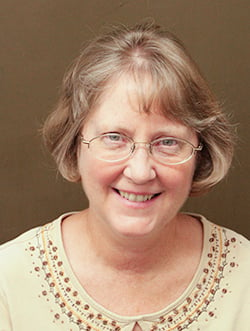Utah UCEDD Researcher Honored for Contributions to Children with Sensory Impairments
October 2, 2012

|
| Elizabeth Dennison |
Over the summer, the American Association for Education and Rehabilitation of the Blind and Visually Impaired recognized Elizabeth Dennison for written work that has significantly impacted her field, presenting her with the bi-annual Warren Bledsoe Award for curricula that have trained professionals in 44 states and six countries.
Dennison directs the SKI-HI Institute, a group of professionals dedicated to improving the lives of children and families with special needs. It is now located within the CPD's Research and Evaluation Division at Utah State University.
The work that inspired Dennison's award started around 30 years ago, when she and a team from SKI-HI developed a new early intervention model for services to young children with multiple sensory impairments and their families at home. The resulting curriculum, INSITE (In-Home Sensory Impaired Training and Education), came not just with materials but also with training for the professionals who would introduce it to families.
"It started when there was a void for these kinds of materials and services out there," Dennison said.
In the mid-90s, Dennison headed up the development of still more materials. The VIISA (Vision Impaired Inservice in America) program addressed the needs of young children who were blind or had low vision in both preschool programs and in the home.
The two curricula provided strategies for caregivers to work with these children to foster their development. They illustrated the eye's anatomy and explained how a visual impairment can affect other aspects of a child's development and learning. They discussed ways to interact with these children that might be different from methods used with sighted children.
Years later, VIISA has been translated into Arabic, thanks to the efforts of a teacher who took them back to her native Jordan. There, the teacher has been providing the training to professionals in several Middle Eastern countries. Parts of VIISA were also translated into Chinese. The INSITE curriculum has been translated into Polish, with the help of the Polish National Association for the Deafblind and the Hilton-Perkins Program in Boston.
Dennison was nominated for the Bledsoe Award by staff at the New Mexico School for the Blind and Visually Impaired. New Mexico uses the VIISA training and curriculum statewide, and Dennison has worked with professionals there for fifteen years.
She also works with Utah's Schools for the Deaf and Blind. Through them, she collaborates with the Up to 3 Program at Utah State University to serve young children with blindness and visual impairment and their families in Cache Valley.
"Bess brings great knowledge and expertise to families and professionals who serve the families of children with visual impairments," said Marla Nef, program coordinator for the Up to 3 program. "She has trained early interventionists at Up to 3 for years, as well as staff throughout the state of Utah. She opens their understanding of how critical vision is for a young child to develop necessary motor, language, cognitive and social skills. Her work helps people bridge the developmental gap that can occur when vision is not present."
Writer: JoLynne Lyon (435-8797-1977)
Contact: Elizabeth Dennison







